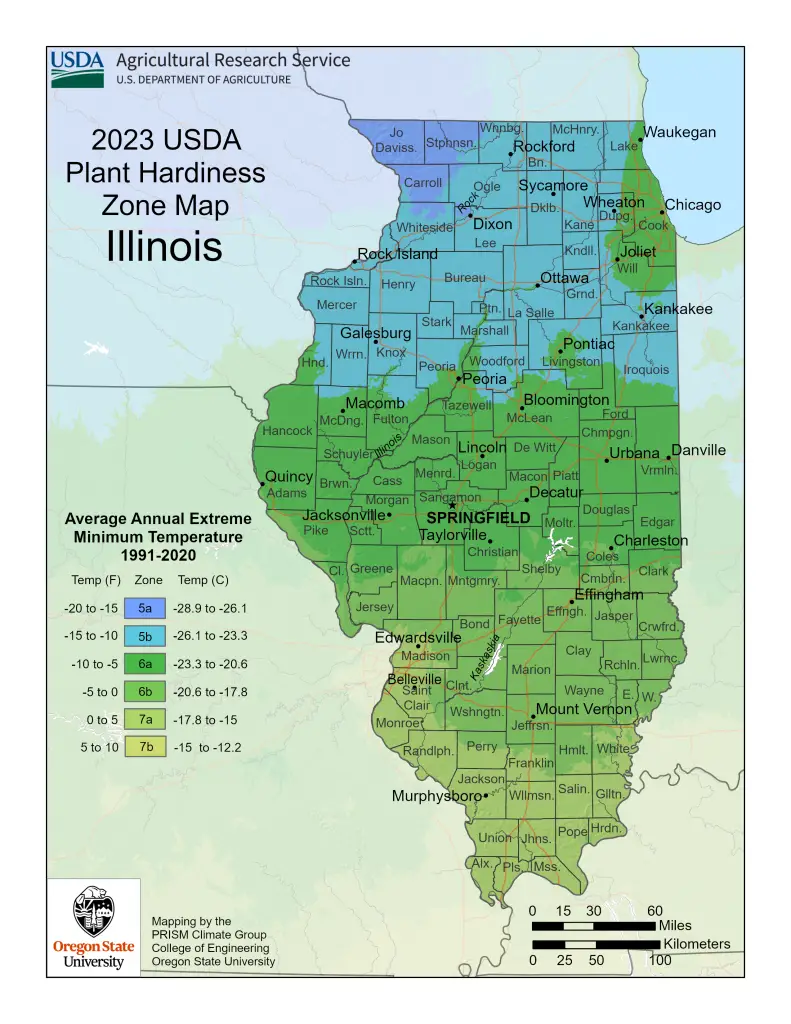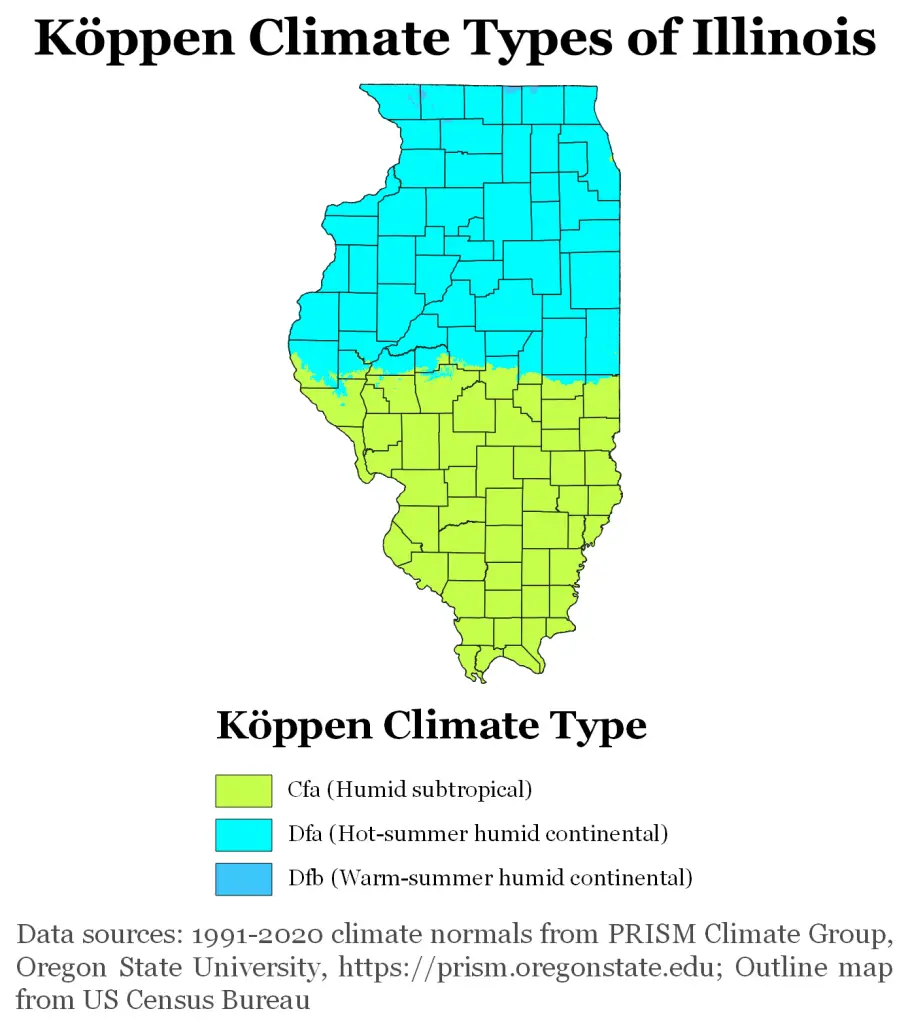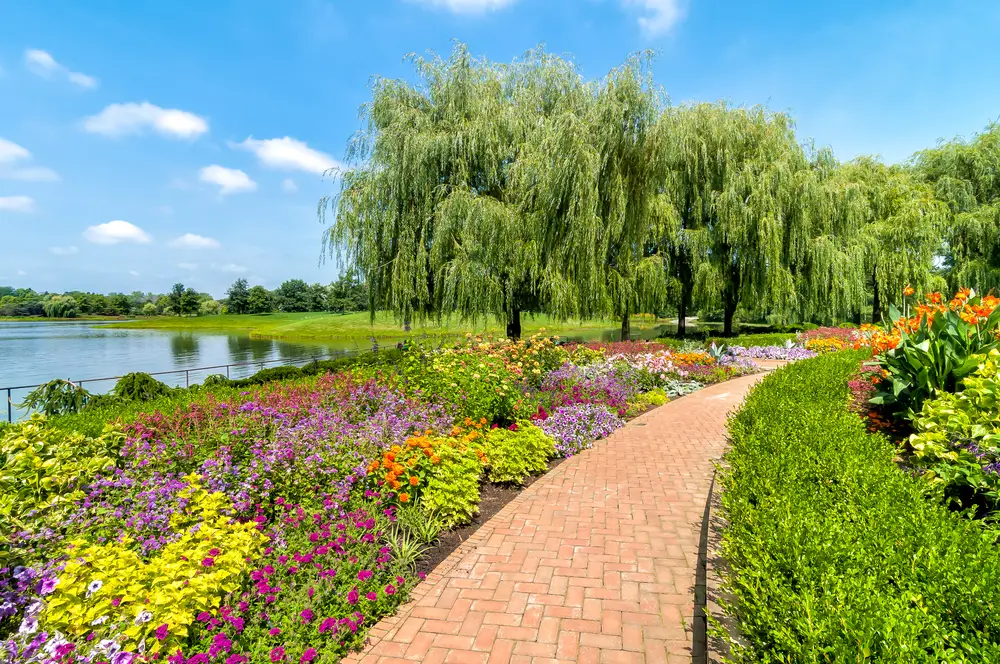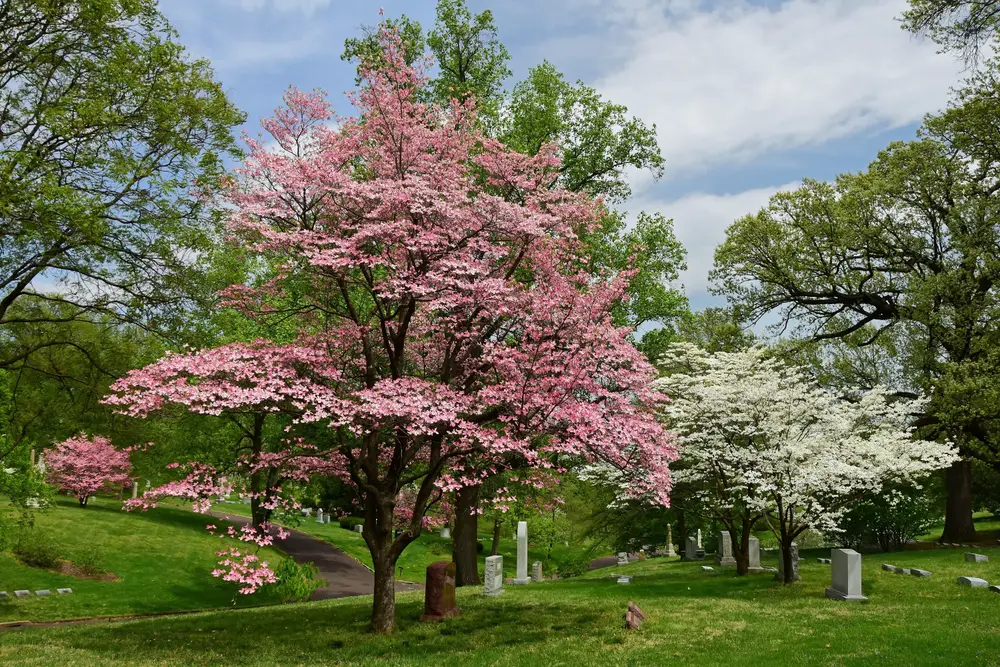Summary
Illinois plant hardiness zones range from 5a to 7b. The overall average minimum extreme winter temperatures range from -20°F (-28.9°C) to 10°F (-12.2 °C).1
The state is split into two climate regions. The south experiences humid subtropical climate zones, and the north humid continental. Both climates experience seasons, although the north experiences more fluctuations in extreme temperatures and can have cold, snowy winters.1-4
The north has a shorter growing season at 160 days. The south has one that is longer with 200 days. Greenhouses are a great way to extend the growing season in all regions of this state.8
Illinois experiences rain and storms during every month of the year, but the highest percentage of rainfall occurs in June-July.7
Plant suggestions include but are not limited to the following:10-25
- Illinois Mimosa
- Red-Osier Dogwood
- Dutchman’s Breeches
- Wild Yam
- Cilantro
- Wild ginger
- American plum
- Purple Emperor Sedum
Illinois Plant Hardiness Zones

| USDA Hardiness Zone | Average Minimum Extreme Winter Temperature Range Fahrenheit (°F) Celsius (°C) | Average Last Frost Date Range In Spring (Beginning Of The Growing Season) | Average First Frost Date Range In Autumn (End Of The Growing Season) |
| 5a | -20°F to -15°F -28.9°C to -26.1°C | Early to mid-April | Mid to late October |
| 5b | -15°F to -10°F -26.1°C to – 23.3°C | Early to mid-April | Mid to late October |
| 6a | -10°F to -5°F -23.3°C to 20.6°C | Early to mid-April | Mid to late October |
| 6b | -5°F to 0°F -20.6°C to 17.8°C | Early to mid-April | Mid to late October |
| 7a | 0°F to 5°F -17.8°C to -15°C | Early to mid-April | Mid to late October |
| 7b | 5°F to 10°F -15°C to -12.2°C | Mid to late March | Early to mid-November |
Illinois Growing Conditions
General Climate3-6

Illinois is split into two different climate ranges, with the south experiencing humid subtropical climates and the north experiencing humid continental climates.
A humid subtropical climate is typically a temperate climate with humid, hot summers and cool to mild winters.
A humid continental climate has four distinct seasons. There are large variations in temperatures within each season. This type of climate can experience severe cold and snow during the winter season. The summers can also bring extreme heat.
Due to its proximity to Lake Michigan, the northeastern part of the state can experience high winds and warmer weather compared to the rest of the northern quarter.
Illinois growing seasons vary depending if you live in the north or the south. The north can experience approximately 160 growing days and the south has a longer season with 190+ growing days.
Illinois experiences high amounts of precipitation and storms throughout all seasons.
Microclimates
USDA plant hardiness zones are an important starting point for your garden, but you’ll also need to consider microclimates.
Microclimates are areas where specific conditions create a climate different from the climate they’re situated in.
Buildings, fences, paved areas, or short hills and valleys can create these microclimates.
They can be as small as a space in your backyard or as large as a city.
In other words, learn about your local conditions from local experts to see if your garden falls into a microclimate.
Extreme Weather4,7
Flooding
Illinois experiences heavy precipitation throughout all growing seasons. This leads to pressure on the river systems within Illinois, causing the waters to rise and increasing the chances of flooding. These extreme weather events can have astronomical effects on your home and garden.
Sometimes, you can anticipate flooding and take certain measures to protect your home and garden, though. Filling sandbags and creating a blockade around your space helps direct the flow of water away from your home and garden. This mitigation tool works best when a flood is predicted, and you have ample time to prepare for it.
Tornadoes
Illinois experiences approximately 29 tornadoes a year! Higher chances of tornadoes happen in early spring until midsummer, but the state can experience them during every month of the year.
As such, you may want to try container gardening. That way, you can move plants indoors during extreme storms. Building strong, resilient raised beds you can anchor down is another way to deal with tornadoes, although there’s unfortunately never a guarantee with these destructive forces of nature.
Thunderstorms
60% of Illinois’s high precipitation rate comes from thunderstorms, with the south experiencing more severe storms compared to the north. Most of the severe storms occur during the summer season, from July to August.
Growing Season8
Southern Illinois has a longer growing season than the northern part of the state. It ranges from 190 to 215 days, while the north ranges from 160 to 180 days.
You can always use a greenhouse or cold frames to extend the length of your growing season.
Illinois Gardening Tips7-10

Practice Container Gardening
Container gardening isn’t just good for tornadoes, as mentioned above. It’s also good for flooding, storms, and other extreme weather.
Since you’re gardening in containers like pots, you can move your plants indoors for protection during severe weather.
One of the key tips to successful container gardening is to know the size and spacing your plants require. This way, they will have space to breathe. Companion planting is also beneficial for thriving container gardens.
Adding mulch and compost each year increases your chances of growing success. This way you are building up nutrients and creating happy, healthy soils. Watering with organic liquid fertilizer is also advantageous.
Plant For Flooding
Choosing plants that are specific to your area helps mitigate against extreme weather events like flooding. This way you can have peace of mind during the rainy season.
Choosing plants that are heavy drinkers and can handle wet feet is an advantageous way to absorb groundwater and can help reduce flooding on your property. An example of this would be willow species. They are heavy drinkers and like being wet.
Embrace A Zen-Like Detachment
Embracing a zen-like detachment from your garden helps overcome stress when living in a state where tornadoes can occur any month of the year.
The thought of losing plants and a garden you worked so hard on can seem frustrating, but having this knowledge ahead of time can help you plan accordingly.
This might mean growing plants from seed, as it is a more economical approach, This might also mean using native plants, which are more resilient to the growing climate.
Stay strong, and keep planting!
Consult With Local Professionals
Consulting with local gardening professionals allows you to benefit from their experience with your area’s conditions, the plants that do well there, and overall best practices.
Illinois Plant Suggestions10-25

Trees
- Flowering Dogwood (Cornus florida)
- Illinois Mimosa (Desmanthus illinoensis)
- River Birch (Betula nigra)
Shrubs
- Hazelnut (Corylus americana)
- Red-Osier Dogwood (Cornus sericea)
- Spicebush (Lindera benzoin)
Flowers
- Drooping Coneflower (Ratibida pinnata)
- Dutchman’s Breeches (Dicentra cucullaria)
- Dwarf Larkspur (Delphinium tricorne)
Vegetables
- Wild Yam (Dioscorea villosa)
- Wild Sweet Potato (Ipomoea pandurata)
- Squash (genus Cucurbita)
Herbs
- Lemon verbena (Aloysia citrodora)
- Cilantro (Coriandrum sativum)
- Dill (Anethum graveolens)
Spices
- Wild Ginger (Asarum canadense)
- Garlic (Allium sativum)
- Turmeric (Curcuma longa)
Fruits
- American Plum (Prunus americana marsh)
- Common Blackberry (Rubus allegheniensis)
- Black Huckleberry (Gaylussacia baccata)
Succulents
- Purple Emperor Sedum (Sedum telephium)
- Sedum Spectabile ‘Meteor’ (Hylotelephium spectabile)
- Hens-and-chicks (Sempervivum tectorum)
Disclaimer
Any of the above can change and is not exhaustive.
Treat anything above like a good starter guide. Then use that as a foundation as you consult with local gardeners, professionals, forecasts, guides, and organizations.
Sources
- “USDA plant hardiness zones map”.US Department of Agriculture. Accessed March April 5, 2024.
- “Chart of First and Last Frost Dates by Zone”. Park Seed. March 27, 2024.
- “Climate of Illinois”. University of Illinois. Accessed April 5, 2024.
- “Climate of Illinois”. Wikipedia. March 9, 2024. Accessed April 5, 2024.
- “Humid subtropical climate”.Wikipedia. March 30, 2024. Accessed April 5, 2024.
- “Humid continental climate”. Wikipedia. April 3rd, 2024. Accessed April 5, 2024.
- “Take Steps to Prepare for Tornado Season”. Village of Lake in the Hills. Accessed April 5, 2024
- “When to Plant”. University of Illinois. Accessed April 5, 2024.
- Leverette, Mary Marlowe.“Vegetable Container Gardening for Beginners”. The Spruce. February, 2024. Accessed April 5, 2024.
- “For Your Garden”. Illinois Department of Natural Resources. Accessed April 5, 2024.
- McFarland, Joe. “The Gathering Revival”. June 2007. Accessed April 5, 2024.
- “Common Blackberry (Rubus allegheniensis)”. Illinois Wildflowers. Accessed April 5, 2024.
- “Wild Yam (Dioscorea villosa)”. Illinois Wildflowers. Accessed April 5, 2024.
- “Huckleberry”. Illinois Wildflowers. Accessed April 5, 2024.
- “Wild Sweet Potato (Ipomoea pandurata)”. Illinois Wildflowers. Accessed April 5, 2024.
- “Ten Herbs to Start Growing”. Chicago Botanic Garden. Accessed April 5, 2024
- “All About Herbs: Lemon verbena (Aloysia citradora)”. Jekka’s. Accessed April 5, 2024.
- “Cilantro / Coriander, Coriandrum sativum”. Wisconsin Horticulture. Accessed April 5, 2024.
- “Anethum graveolens”. Missouri Botanical Gardens. Accessed April 5, 2024.
- Mahr, Susan. “Garlic, Allium sativum”. Wisconsin Horticulture. Accessed March 10, 2024
- “Turmeric | Description, History, & Uses”. Britannica. March 7, 2024. Accessed April 5, 2024.
- “Sedum telephium ‘Purple Emperor’”. White Flower Farm. Accessed April 5, 2024.
- “Hylotelephium spectabile”. Wikipedia. April 17, 2023. Accessed April 5, 2024.
- Barrett, Hannah. “Hens and Chicks: Origins“. North Dakota State University. 2011. Accessed April 5, 2024.
- “Summer Squash”. Britannica. March 25, 2024. Accessed April 18, 2024.
- “American plum”. Government of Canada. Accessed April 18, 2024.


